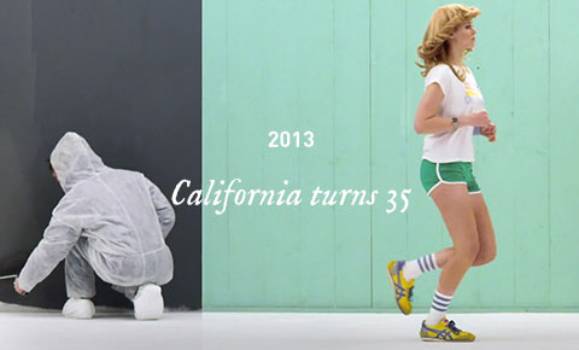 Down
Down
Born from Ambition
This is the story of Mr Kihachiro Onitsuka. A story that started from a humble idea that sport had the power to transform lives. Anima Sana In Corpore Sano - sound mind, sound body. The Latin maxim that was the ethos behind Onitsuka Tiger, and later became the acronym ASICS.
In the beginning, we set out to help the youth of Japan and rebuild a better future after the War ended in 1949. We believed playing sport was the best way to unite people and connect communities. Sixty years on, this same philosophy remains. Our focus on carefully crafted details and an ongoing urge to innovate is what has allowed us to take Onitsuka Tiger to the world.
Here's some of those moments...
1951
An idea inspired by an octopus
This is a story of an octopus. An eight-legged delicacy fated to be so much more than somebody's supper. Whose tentacle got stuck to a salad bowl served to Kihachiro Onitsuka. And became the inspiration for Onitsuka Tiger's breakthrough sports shoe innovation: the suction cup sole on the 1951 OK BASKETBALL SHOE. Its grip allowed players to make the fast breaks and sudden stops essential to the game. Little wonder the Japanese high school team that first wore the shoes won their championship.
1960
Story of a bath
Kihachiro ONITSUKA had a eureka moment as he watched steaming hot water wrinkle his toes in the bath. Onitsuka had been shown blister-promoting forms by a university medical professor, and he realized that heat causes running blisters. This inspired him to focus on better air circulation for long-distance running shoes. Drilling holes into shoes proved to be an epochal discovery in 1960. The MAGIC RUNNER was not only more lighweight, but also offered excellent air circulation.
1964
The need for speed
Japanese innovation came into its own at the 1964 Tokyo Games. It was here that the iconic RUNSPARK debuted - Onitsuka Tiger's first fixed track spikes for athletes. Athletes could select from four different spike lengths, depending on track conditions. The line featured a number of shoe structures, including a heel with layers of soft sponge to help absorb shock upon impact with the ground.
1966
The birth of an icon
Changes made in 1966 are still evident today. The Onitsuka Tiger stripe first appeared that year and still adorns the sides of Onitsuka Tiger and ASICS shoes. The stripe first appeared on the LIMBER UP Leather BK, introduced for the 1968 Mexico Olympic Game.
1969
An athletic forerunner
By performing excellently at major international events, Onitsuka Tiger earned its stripes as one of Japan's top sports shoe makers. And the rest of the world took notice. American middle-distance runner and Bill Bowerman protege Phil Knight met with Mr. Onitsuka as part of his MBA studies in marketing athletic shoes. He was inspired to set up Blue Ribbon Sports to bring Onitsuka Tiger shoes to the US. The company was soon to become Nike, while Onitsuka Tiger later created the TIGER CORTEZ in response to a request from Blue Ribbon Sports.
1978
The modern jogger takes shape
The CALIFORNIA was made for jogging. It helped maintain the arch of the foot and give firm support to the toes, while the form-fitting insole allowed enough room for the toes to move. The wide, rounded heel aided in balance while landing, and the wide, curved-up toe assisted in forward movement.
As a safety feature, the CALIFORNIA also had reflective patches stitched on the back of the shoes, so that drivers could see the runner from 300 meters away at night or on rainy days.

As Onitsuka Tiger grew to become ASICS, and go on to establish itself as one of the world's leading sports brands - we always knew the spirit of our heritage would live on. A history that prided itself on a Japanese craftsmanship combined with a timeless aesthetic that was discovered on the track, and later worn on the street.
This rich heritage inspired us to relaunch Onitsuka Tiger back into the world in 2002. Classics were refreshed, reinterpreted, reinvented. Taking the original Onitsuka Tiger sports shoes as a starting point, we made changes to cuts, colours and construction to bring you made-for-living remodels of the MEXICO 66, CALIFORNIA 78 and NIPPON MADE.









